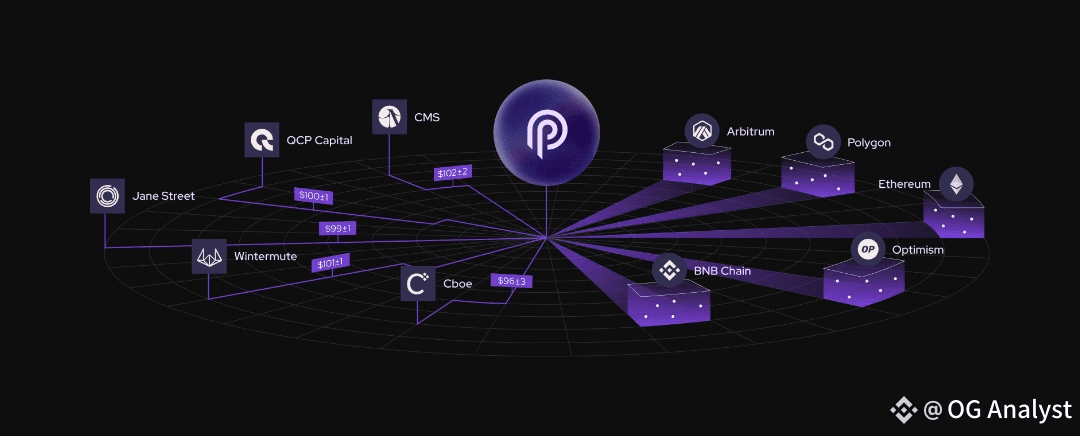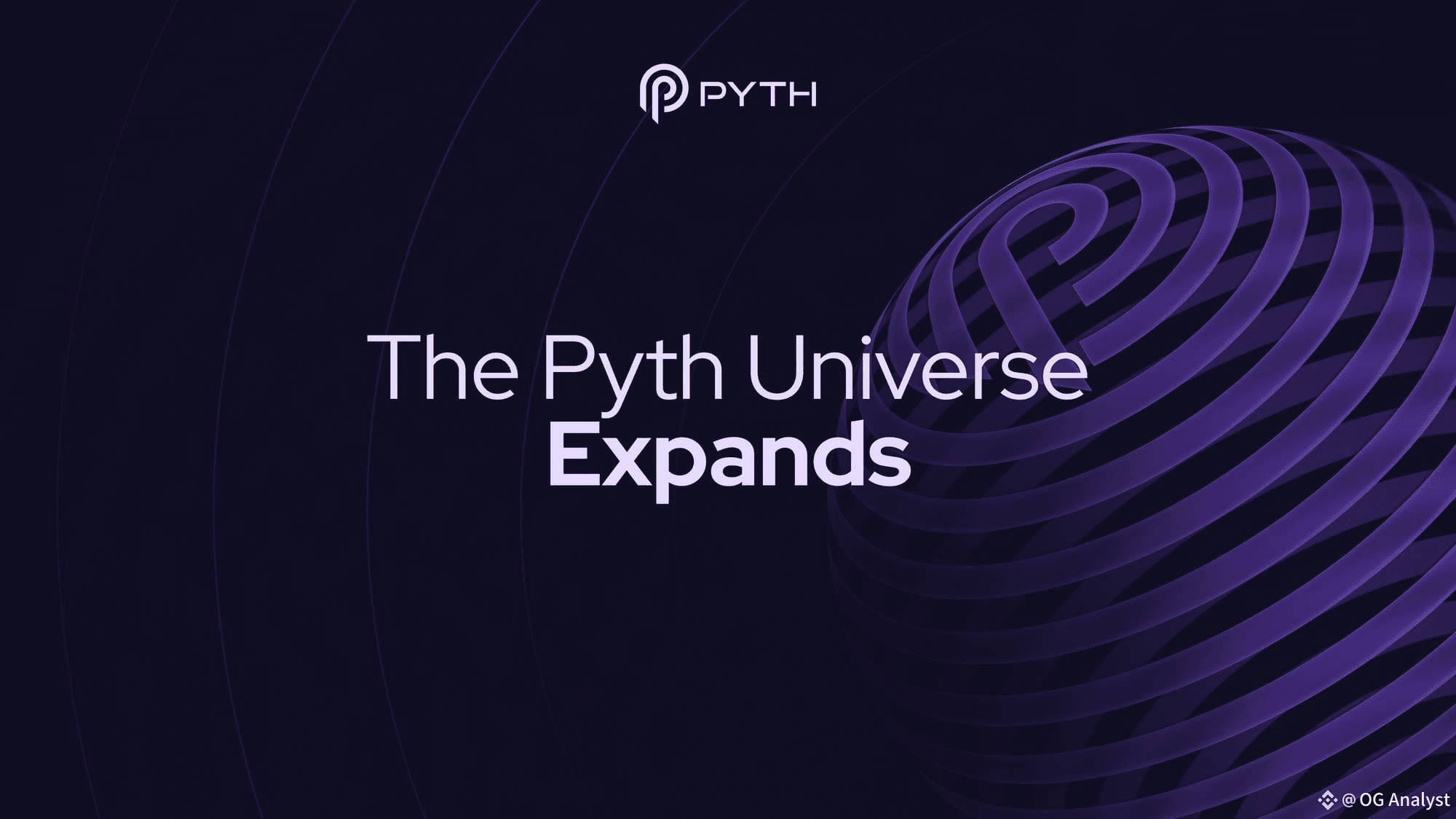In today’s digital markets, information is money. From Wall Street to Web3, the edge between winning and losing often comes down to one factor—who gets the right data at the right time. As decentralized finance (DeFi) grows from a niche experiment into a multi-trillion-dollar ecosystem, the need for real-time, reliable, and trust-minimized data feeds has become one of the industry’s biggest bottlenecks.
Enter Pyth Network—a decentralized, first-party financial data oracle that is rewriting how information flows into blockchain ecosystems. With its bold vision, massive adoption curve, and a growing role in institutional markets, Pyth is quickly positioning itself as the “Bloomberg Terminal of Web3.”

The Oracle Problem: Why Data Matters More Than Ever
Before diving into Pyth’s innovation, it’s essential to understand the “oracle problem.” Blockchains, by design, are self-contained systems. They cannot natively access real-world data—whether that’s asset prices, sports scores, or weather conditions. To power financial contracts, DeFi protocols need accurate, secure data oracles that feed them the truth.
For years, projects like Chainlink dominated this market by aggregating off-chain data into smart contracts. But there’s a catch: most of these oracles depend on third-party aggregators—meaning the data often comes late, is limited in coverage, or worse, vulnerable to manipulation.
Pyth flips the model on its head. Instead of relying on third-party middlemen, it sources first-party data directly from exchanges, trading firms, and market makers. Imagine skipping the news agency and hearing breaking news straight from the field reporter—that’s the kind of speed and integrity Pyth offers.

Vision: A Global, Decentralized Data Layer
Pyth’s mission extends beyond DeFi—it wants to build the global data layer of the decentralized economy.
Phase 1: DeFi Dominance
Today, Pyth secures billions of dollars in on-chain value across multiple ecosystems. It delivers ultra-low-latency price feeds for assets ranging from BTC and ETH to stocks, FX, and commodities.
Phase 2: Institutional-Grade Data
The next leap is expanding into the $50B+ institutional data industry. Pyth’s subscription-based product aims to serve hedge funds, asset managers, and fintech companies with on-demand, cryptographically verified data that rivals (and possibly surpasses) traditional providers like Bloomberg or Refinitiv.
Phase 3: Web3 & Beyond
The long-term vision? Pyth wants to become the default data standard not just for finance, but for any digital system that needs truth at scale—from AI training datasets to IoT systems.
This is not just about DeFi anymore. It’s about creating a borderless marketplace for verified information.
The PYTH Token: More Than Just Governance
At the heart of this ecosystem lies the PYTH token—but unlike most governance-heavy utility tokens, PYTH plays multiple critical roles:
1. Incentives for Data Providers
Market makers and exchanges are directly rewarded for contributing first-party data, ensuring sustainability of the network.
2. Consumer Subscriptions
As Pyth rolls out institutional-grade subscription models, PYTH will become the unit of settlement for accessing premium datasets.
3. DAO Governance & Revenue Allocation
Token holders help govern the protocol, deciding how revenues are distributed among contributors and how new data categories are prioritized.
This blend of utility + governance + incentive alignment makes PYTH a rare token model with real-world business fundamentals behind it.
Why Pyth Is Trending Now
The rise of Pyth isn’t just theoretical—it’s already one of the fastest-growing oracles in crypto history.
Over 350 applications across ecosystems like Solana, Ethereum, Sui, and Aptos use Pyth feeds.
Pyth consistently secures over $2B+ in TVL (Total Value Locked) in DeFi.
Its unique pull-based oracle design allows developers to request the freshest data on-demand, rather than relying on stale push-based models.
In a landscape where liquidity wars and DeFi hacks make headlines daily, having a secure, low-latency data feed is not just a nice-to-have—it’s a survival mechanism.
Institutional Adoption: The Key Catalyst
Here’s where things get truly interesting. While DeFi adoption is already fueling Pyth’s growth, the next wave could come from traditional finance.
Hedge Funds & Quant Firms need verified on-chain data for hybrid finance strategies.
Fintechs & Exchanges demand trusted, decentralized sources to complement their APIs.
Regulatory Environments may soon require verifiable cryptographic proof of data integrity.
Pyth is perfectly positioned to capture this trillion-dollar crossover between CeFi, DeFi, and TradFi.
Predictions: Where Pyth Could Be Headed
1. Expansion Into AI: AI models are only as good as the datasets they train on. Pyth’s verified data feeds could become a backbone for AI-driven trading and predictive analytics.
2. Mainstream Stock & FX Feeds: As tokenization grows, expect to see tokenized equities and FX derivatives powered by Pyth oracles.
3. Cross-Chain Standardization: Pyth could become the universal data layer across L1s and L2s, much like TCP/IP became the standard for the internet.
4. Enterprise Integration: Partnerships with major financial institutions (banks, clearinghouses, brokerages) could vault Pyth into the Bloomberg/Refinitiv competitor category.
Closing Thoughts: Why Pyth Matters
At its core, Pyth is about trust in information—and in a digital-first world, nothing is more valuable. The project isn’t just solving a DeFi problem; it’s addressing a global need for verifiable truth in finance and beyond.
If Web3 is the new economy, then Pyth is building its nervous system—ensuring that every contract, every market, and every participant operates with the same, real-time truth.
For traders, builders, and investors, Pyth isn’t just a protocol to watch—it’s the future of data itself.
#PythRoadmap @Pyth Network $PYTH

